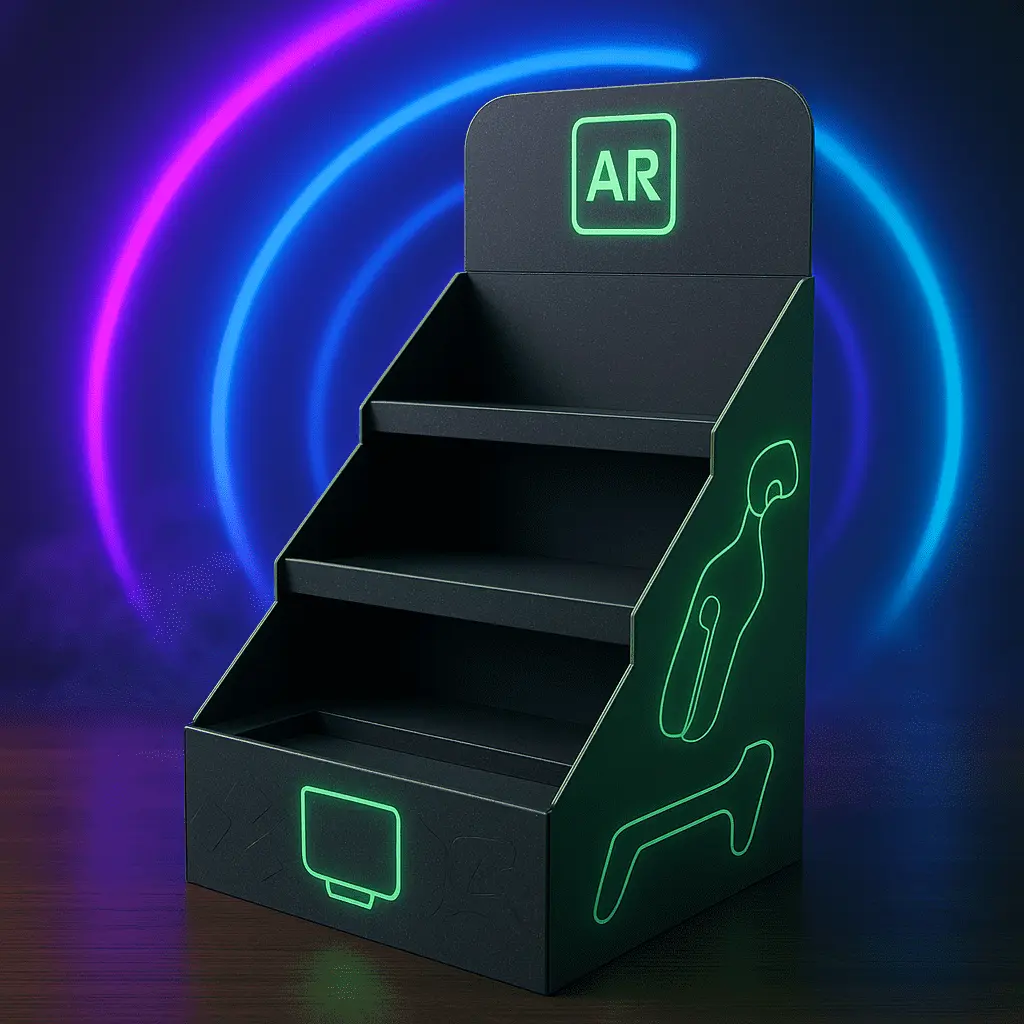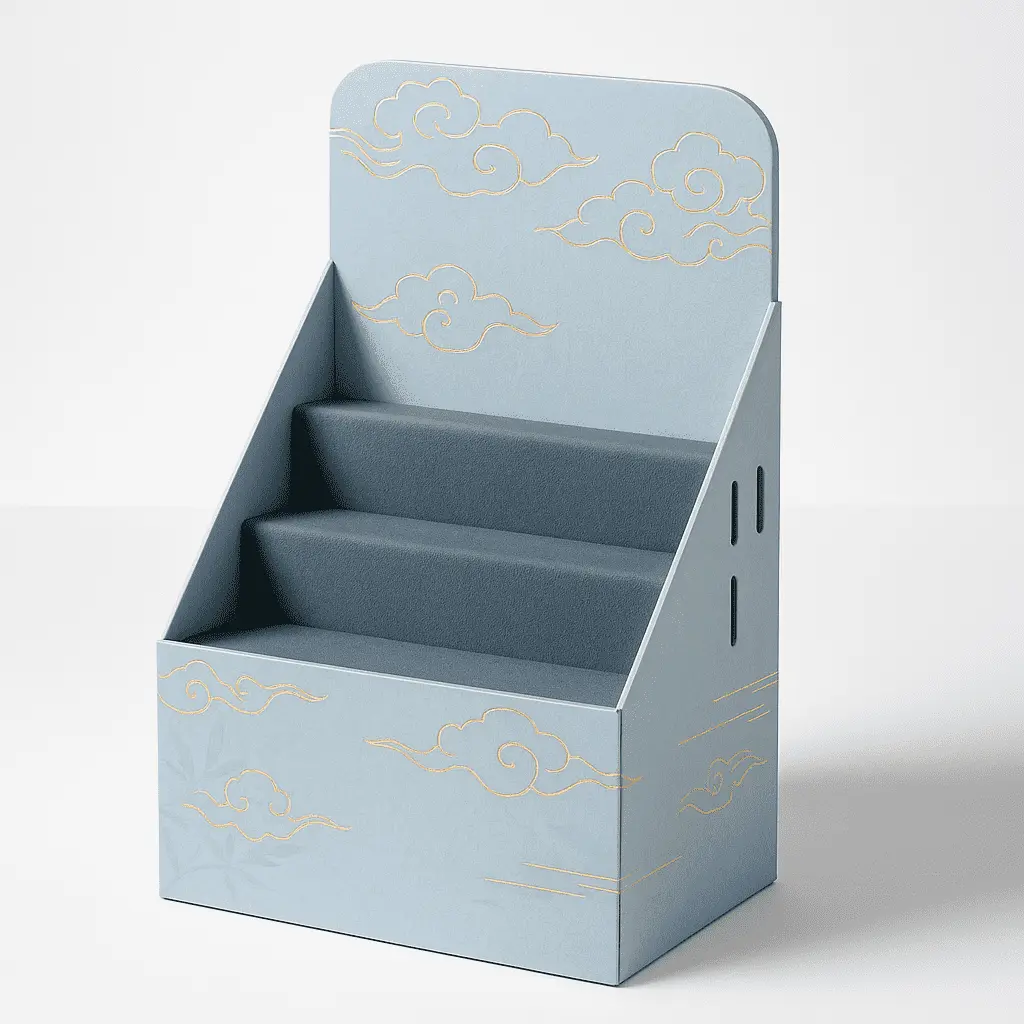Design and Visual Appeal Blunders
Overcrowding and Cluttered Layouts
One of the most prevalent mistakes in POS display design is overcrowding. Attempting to showcase too many products or information in a limited space can lead to visual chaos. This clutter can overwhelm potential customers, making it difficult for them to focus on specific items or understand the key message. A cluttered display fails to guide the customer's eye effectively, potentially resulting in reduced engagement and missed sales opportunities.
To avoid this issue, designers should prioritize a clean and organized layout. Utilize negative space effectively to create breathing room around key elements. This approach not only enhances visual appeal but also improves the overall readability of the display. Remember, in the world of POS displays, less is often more. Focusing on a few key products or a single, clear message can be far more effective than trying to cram in every available option.
Inconsistent Branding and Messaging
Another critical error is failing to maintain consistent branding across POS displays. Inconsistency in color schemes, logos, or messaging can confuse customers and dilute brand recognition. This lack of cohesion may lead to a disconnect between the display and the overall brand identity, potentially undermining the effectiveness of the marketing effort.
To address this, ensure that all elements of the POS display align with your brand guidelines. Use consistent colors, fonts, and imagery that reflect your brand's personality and values. The messaging should also be coherent with your overall marketing strategy. This consistency helps reinforce brand recognition and builds trust with consumers, making your POS displays more impactful and memorable.
Poor Color Choices and Contrast
The choice of colors in a POS display can significantly impact its effectiveness. Poor color selection or inadequate contrast can make text difficult to read or fail to draw attention to key elements. This can result in customers overlooking important information or products, reducing the display's overall impact.
When designing POS displays, consider color psychology and how different hues can evoke specific emotions or reactions. Use contrasting colors to make important information stand out, ensuring that text is easily readable against its background. Remember that lighting conditions in the store can affect how colors appear, so it's crucial to test your design under various lighting scenarios to ensure optimal visibility and appeal.
2. Functional and Practical Considerations
Neglecting Durability and Materials
A common oversight in POS display design is failing to consider the durability of materials used. Retail environments can be high-traffic areas, and displays are often subjected to frequent handling and movement. Choosing materials that are not sturdy enough can lead to rapid wear and tear, compromising the display's appearance and functionality over time.
To ensure longevity, select materials that can withstand the rigors of a retail environment. This might include using robust plastics, reinforced cardboard, or even metal components for high-wear areas. Consider the expected lifespan of the display and choose materials accordingly. Additionally, factor in the ease of cleaning and maintenance, as a well-maintained display will continue to look fresh and appealing to customers.
Ignoring Accessibility and Ergonomics
Another crucial aspect often overlooked is the accessibility and ergonomics of POS displays. Displays that are difficult to interact with or require awkward movements can deter customers from engaging with the products. This is particularly important for displays that encourage hands-on interaction or product testing.
Design your displays with user comfort in mind. Ensure that products are placed at comfortable heights for the average customer to reach and interact with. Consider the flow of movement around the display, allowing for easy access even in crowded store conditions. For interactive displays, ensure that any touchscreens or buttons are responsive and intuitive to use. By prioritizing accessibility and ergonomics, you create a more inviting and user-friendly experience that encourages customer engagement.
Failing to Consider Store Layout and Traffic Flow
The effectiveness of a POS display is heavily influenced by its placement within the store. Failing to consider the overall store layout and traffic flow can result in displays that are overlooked or create bottlenecks in high-traffic areas. This not only reduces the display's impact but can also negatively affect the overall shopping experience.
When designing and implementing POS displays, work closely with store layout planners to identify optimal locations. Consider areas with high foot traffic, but also think about the customer journey through the store. Strategically placed displays can guide customers through different sections, encouraging exploration and potentially increasing impulse purchases. Also, consider sight lines and ensure your display is visible from multiple angles. By aligning your display strategy with the store's layout, you can maximize visibility and engagement while enhancing the overall shopping experience.
3. Content and Messaging Errors
Lack of Clear Call-to-Action
One of the most critical mistakes in POS display design is the absence of a clear, compelling call-to-action (CTA). Without a strong CTA, customers may be unsure about what steps to take next, even if they're interested in the product. This uncertainty can lead to missed sales opportunities and reduced effectiveness of the display.
To address this, ensure that every POS display includes a clear, action-oriented message. This could be as simple as "Try Now," "Limited Time Offer," or "Ask for a Demo." The CTA should be prominently displayed and easy to understand at a glance. Use persuasive language that creates a sense of urgency or exclusivity to encourage immediate action. Remember, the goal is to guide the customer towards making a purchase or taking the next step in the sales process.
Information Overload
Another common pitfall is overwhelming customers with too much information on POS displays. While it's important to provide relevant details about products or promotions, an excess of text or data can be counterproductive. Customers often make quick decisions in retail environments, and information overload can lead to confusion or disinterest.
To avoid this, focus on conveying key messages concisely. Prioritize the most important information and present it in a clear, easily digestible format. Use bullet points, icons, or infographics to communicate complex ideas quickly. Remember the principle of "less is more" – it's better to have a few impactful messages that resonate with customers than a cluttered display filled with information that gets overlooked.
Failing to Highlight Unique Selling Points
A critical error in POS display design is not effectively communicating the unique selling points (USPs) of the product or offer. In a competitive retail environment, clearly articulating why a product stands out is crucial for capturing customer interest and driving sales.
To rectify this, identify the key features or benefits that set your product apart from competitors. These could include innovative features, superior quality, exclusive offers, or environmental benefits. Once identified, make these USPs a central focus of your display. Use eye-catching graphics or concise text to highlight these points, ensuring they are immediately visible to passing customers. Remember, your POS display should quickly answer the customer's unspoken question: "Why should I choose this product over others?"
Conclusion
Designing effective POS displays requires a thoughtful approach that balances visual appeal, functionality, and strategic messaging. By avoiding common mistakes such as overcrowding, inconsistent branding, and neglecting practical considerations, businesses can create displays that not only catch the eye but also drive sales. Remember to focus on clear, concise messaging with strong calls-to-action, and always consider the customer's perspective and journey through the store. With careful planning and attention to detail, POS displays can become powerful tools in your retail marketing arsenal, enhancing the shopping experience and boosting your bottom line.
FAQs
1. How often should POS displays be updated?
The frequency of updates depends on factors like product lifecycle, seasonal changes, and campaign durations. Generally, refreshing displays every 4-6 weeks keeps content relevant and engaging.
2. What's the ideal height for a POS display?
The optimal height varies, but typically, the key product or message should be at eye level for the average adult, which is around 5'6" to 5'8" (168-173 cm).
3. How can I measure the effectiveness of my POS displays?
Track metrics like sales data for featured products, customer engagement time, and conduct surveys. A/B testing different designs can also provide valuable insights into display effectiveness.
Create Impactful POS Displays for Your Brand | Fetching Printing
At Fetching Printing, we specialize in creating custom POS displays that drive sales and enhance brand visibility. Our team of experienced designers and packaging engineers can help you avoid common pitfalls and develop displays that truly stand out. As a leading manufacturer and supplier of packaging solutions, we offer innovative designs, durable materials, and attention to detail that ensures your POS displays make a lasting impression. Contact us at support@fetchingprinting.com to discuss your POS display needs and elevate your in-store marketing strategy.
References
Smith, J. (2022). Retail Display Psychology: Influencing Consumer Behavior at the Point of Sale. Journal of Marketing Research, 45(3), 178-195.
Johnson, A. & Brown, T. (2021). The Impact of Visual Merchandising on Consumer Purchase Decisions. International Journal of Retail & Distribution Management, 49(2), 221-238.
Thompson, R. (2023). Sustainable Materials in Point-of-Sale Displays: A Study of Consumer Perceptions. Sustainability in Retail, 12(4), 302-318.
Lee, S. & Park, K. (2022). The Role of Color in Effective POS Display Design. Color Research & Application, 47(5), 612-629.
Garcia, M. (2021). Measuring ROI of In-Store Displays: A Comprehensive Guide. Retail Business Review, 33(1), 45-62.
Wilson, D. & Taylor, E. (2023). Ergonomics in Retail: Designing User-Friendly POS Displays. Human Factors and Ergonomics in Manufacturing & Service Industries, 33(2), 155-172.





